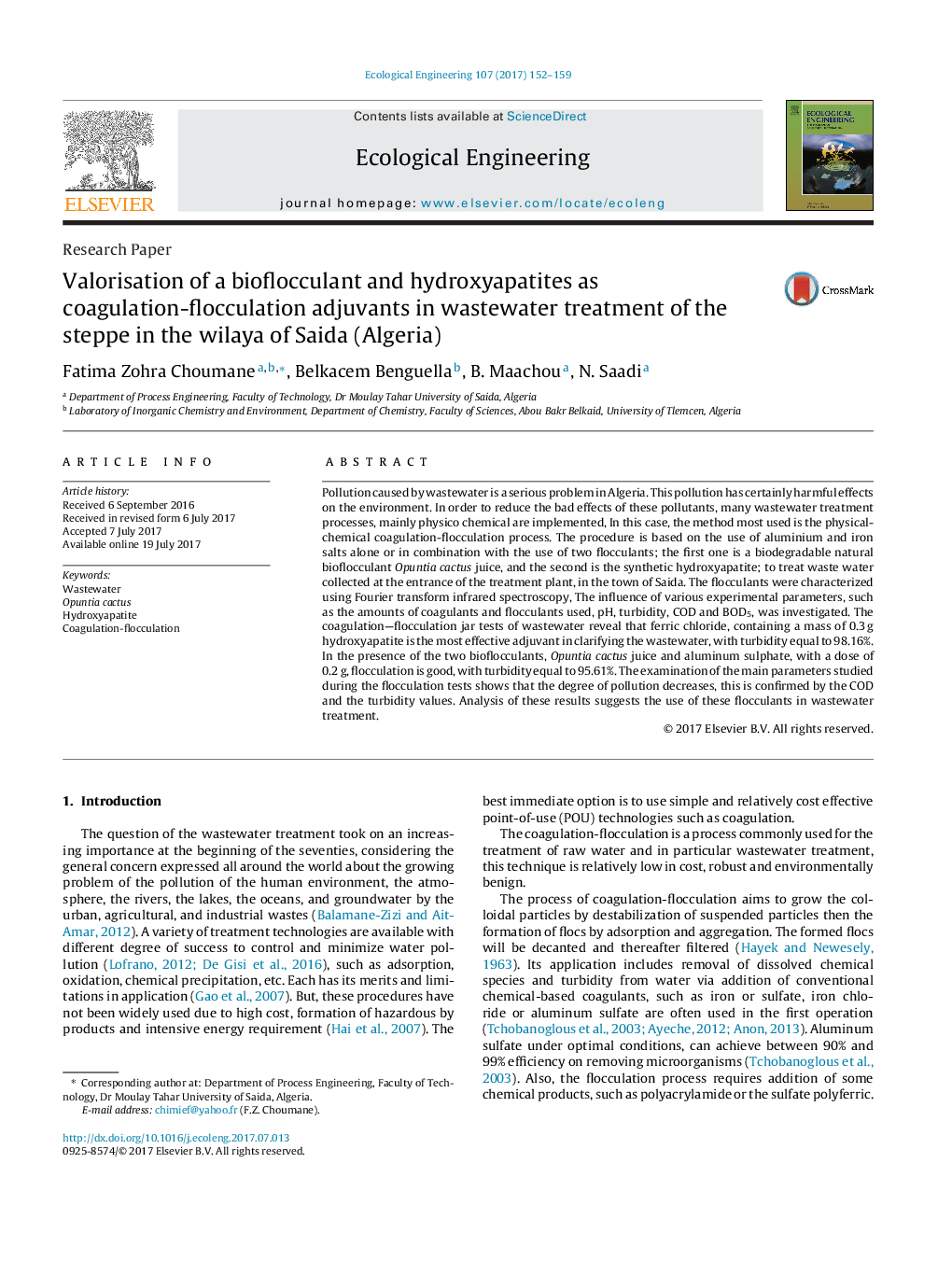| Article ID | Journal | Published Year | Pages | File Type |
|---|---|---|---|---|
| 5743670 | Ecological Engineering | 2017 | 8 Pages |
â¢The present study focuses the effectiveness of the Opuntia cactus juice and synthetic hydroxyapatites as coagulation- flocculation adjuvants for the treatment of waste water.â¢The most important contributions of the article are:⢠Coagulation-flocculation with ferric chloride - hydroxyapatites allow remove 90.9% COD, 98.16% turbidity,⢠Coagulation-flocculation with aluminum sulphate- Opuntia cactus juice allow remove 85.13% COD, 95.61 % turbidity
Pollution caused by wastewater is a serious problem in Algeria. This pollution has certainly harmful effects on the environment. In order to reduce the bad effects of these pollutants, many wastewater treatment processes, mainly physico chemical are implemented, In this case, the method most used is the physical-chemical coagulation-flocculation process. The procedure is based on the use of aluminium and iron salts alone or in combination with the use of two flocculants; the first one is a biodegradable natural bioflocculant Opuntia cactus juice, and the second is the synthetic hydroxyapatite; to treat waste water collected at the entrance of the treatment plant, in the town of Saida. The flocculants were characterized using Fourier transform infrared spectroscopy, The influence of various experimental parameters, such as the amounts of coagulants and flocculants used, pH, turbidity, COD and BOD5, was investigated. The coagulation-flocculation jar tests of wastewater reveal that ferric chloride, containing a mass of 0.3Â g hydroxyapatite is the most effective adjuvant in clarifying the wastewater, with turbidity equal to 98.16%. In the presence of the two bioflocculants, Opuntia cactus juice and aluminum sulphate, with a dose of 0.2Â g, flocculation is good, with turbidity equal to 95.61%. The examination of the main parameters studied during the flocculation tests shows that the degree of pollution decreases, this is confirmed by the COD and the turbidity values. Analysis of these results suggests the use of these flocculants in wastewater treatment.
Graphical abstractDownload high-res image (212KB)Download full-size image
